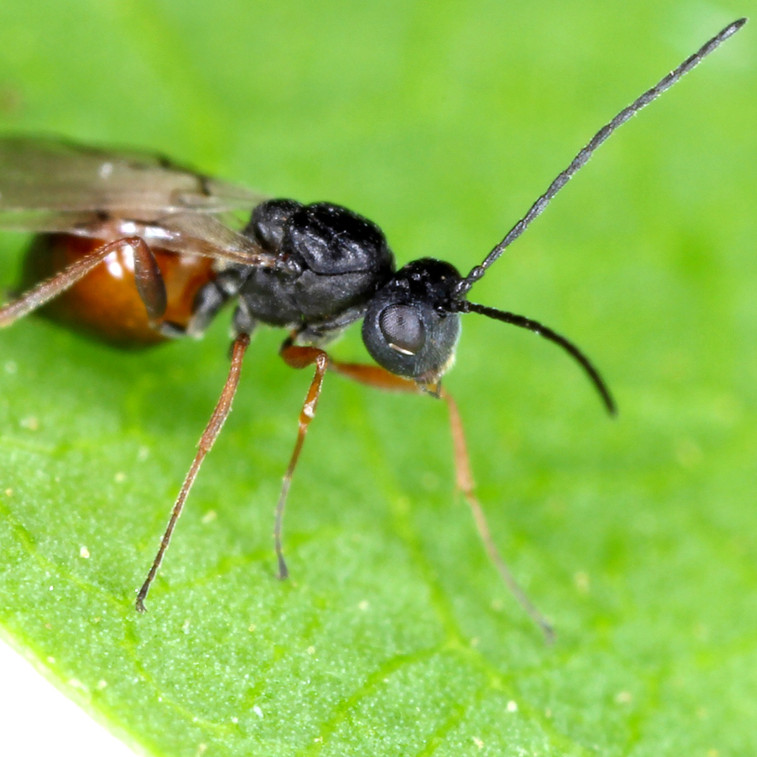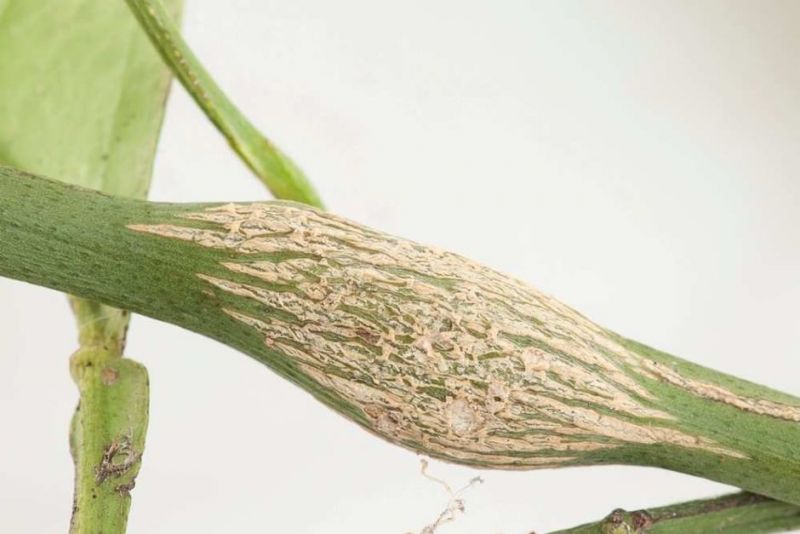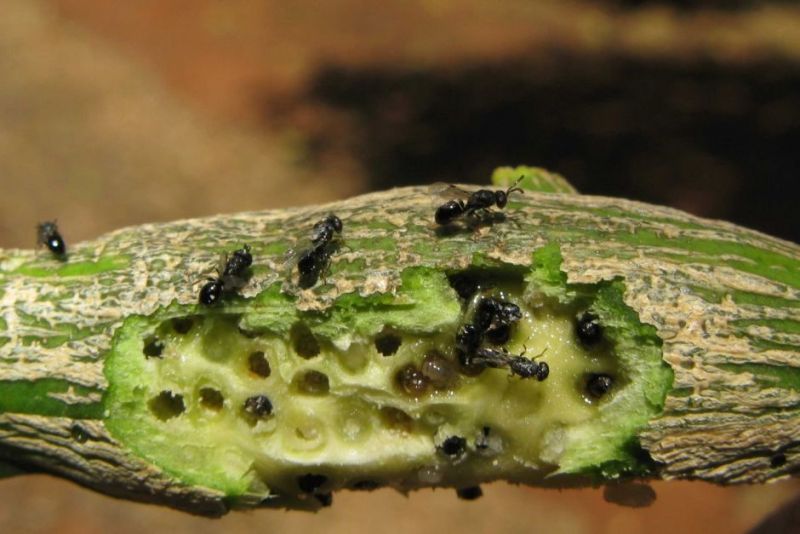
Battling Pests: Controlling Citrus Gall Wasp (Updated for 2025)
Posted by Amber McCallum on 5th Sep 2025
Know Your Enemy
Updated September 2025 — Gall wasp is once again causing major issues for Queensland citrus growers and home gardeners. Also known as citrus wasp, this pest lays eggs in soft new shoots, forming swollen galls that stress the tree and reduce fruit yield. Left untreated, gall citrus wasp can cause ongoing decline. The good news? With the right pruning timing, eco-friendly sprays, and even gall wasp traps, you can control infestations and protect your citrus trees this season.
Citrus Gall Wasp – What is it and how to control?
I. A sneak peek into the life of a Citrus Gall Wasp


Citrus gall wasp hatches: Images sourced thanks to: https://pir.sa.gov.au/
The Citrus Gall Wasp (Bruchophagus fellis) is a seasoned traveller, journeying from tree to tree and laying its eggs in the soft, green stems of our beloved citrus plants. As the larvae grow, they form distinctive galls or swellings on the branches that are easy to spot by June. It's like they're throwing a party, and the host plant is left to pick up the tab.
II. When the galls have fallen: Spotting the signs
New-season galls start to become visible in February. At first glance, you might mistake these swellings for an odd outgrowth. However, as summer strides on, these swellings become more pronounced and easier to identify. June is typically the best time to check for and remove galls.
Rolling up the Sleeves: How to Control the Citrus Gall Wasp
III. Ready, Set, Prune!
Pruning off the galls as soon as they're confirmed is your best bet. If you cut them off by late summer, there's still time for the tree to grow some replacement foliage before winter's chill sets in. And here's a hot tip - toss the clippings in a bag and let them cook in the sun for a week or two before composting. This ensures the larvae meet their maker and don't return to haunt your garden.
IV. A Shave and a Haircut: New Method on the Block
If you're feeling adventurous, try shaving off one side of the gall with a sharp blade or even a kitchen peeler. Exposing the contents to the air dries out and kills the larvae within. But remember, shave off only one side, or you'll risk ringbarking that stem.
Spray Options for Citrus Gall Wasp: An Ounce of Prevention...
V. The eco-oil advantage
Regular sprays of eco-oil during spring could potentially be a two-pronged approach against adult wasps:
- eco-oil is known to deter some insects from laying eggs (like citrus leafminer) and so it may also deter the citrus gall wasp.
- eco-oil contains special plant extracts which attract predatory insects that feed on common pests, including tiny wasps. It may attract the natural predators of the citrus gall wasp as well.
While eco-oil sprays might work in theory, actual trial work is needed to confirm their efficacy against this particular pest. Until then, pruning remains the only proven method of control.
VI. Eco-friendly and Safe
Eco-oil is natural and has no withholding period when used as directed. That means it's safe to use on edible crops. Talk about a win-win!
Gall Wasp Traps and Seasonal Timing (Spring 2025)
Many gardeners look for gall wasp traps as a solution, and while they can help reduce numbers, they are not a silver bullet.
Traps (often bright yellow sticky panels) attract adult citrus wasps as they emerge from galls in spring. By catching some adults before they can lay eggs, traps may help reduce infestations. In Queensland, traps are most effective from September through October, just as adults emerge.
However, traps do not kill larvae already inside galls, and they are inconsistent when used alone. For best results, traps should only be seen as a supplementary measure. The most reliable control remains pruning and proper disposal of galls, supported by eco-friendly sprays to protect new flush.
When to Act in Queensland (Spring 2025)
- September–October: Prime emergence period for citrus gall wasp in SE QLD.
- Early spring: Prune out galls before adults exit.
- Spring flush: Protect new shoots with eco-friendly oil sprays.
- Ongoing: Monitor trees weekly for fresh galls and repeat as needed.
Correct timing is the key to long-term control.
Gall Wasp Traps and Seasonal Timing (Spring 2025)
Many gardeners look for gall wasp traps. They can intercept some adult citrus wasps during spring — especially when placed inside the canopy from September through October — but they are not a silver bullet.
Traps do not affect larvae inside existing galls and results vary when used alone. For consistent control, treat traps as supplementary to the core methods: pruning and proper disposal, plus eco-friendly oils to protect new flush.
FAQs about Citrus Gall Wasp
You've got questions, we've got answers! Here are six frequently asked questions about the citrus gall wasp, its control and management.
1. What is the best time to check for and remove galls?
June is the prime time to scout for galls. They become more visible around February and can easily be spotted by June. The earlier you start, the better chance you have of controlling them.
2. How should I dispose of the pruned galls?
Once you've identified and pruned off the galls, you should throw the clippings in the bin or seal them in a bag. You can then leave this bag to bake in the sun for a week or two before adding it to your compost or shredder. This helps to ensure that any remaining wasp larvae are eliminated.
3. Can eco-oil deter citrus gall wasps?
Though eco-oil has been observed to deter some insects from laying eggs, it's still uncertain if it works the same way with the citrus gall wasp. However, eco-oil is safe to use on edible crops and has potential benefits, so it's worth a try!
4. Does eco-oil attract the natural predators of the citrus gall wasp?
Eco-oil contains special plant extracts that attract predatory insects that feed on common pests. This includes tiny wasps that could be natural predators of the citrus gall wasp. However, further research is needed to confirm this.
5. Can I use a kitchen peeler or a sharp blade to expose the gall contents?
Yes, you can! Shaving off one side of the gall will expose and dry out any larvae inside, effectively killing them. But remember, don't shave all the way around the gall as this will damage the stem.
6. Is there a natural way to control the citrus gall wasp?
Yes, pruning away galls remains the most natural and proven method to control this pest. You could also experiment with eco-oil sprays as a potential deterrent and attractant of natural predators.
Conclusion
The citrus gall wasp might be small, but it sure can pack a punch. This critter might've crept into our gardens uninvited, but that doesn't mean we can't show it the door. It's a tough nut to crack, but with the right tools and a bit of elbow grease, we can give it a run for its money.
Remember, understanding the enemy is the first step to victory. And in this battle, there's no such thing as too much information. So arm yourself with knowledge, roll up your sleeves, and get ready to reclaim your garden from the clutches of the citrus gall wasp. With a bit of grit and determination, you'll have your citrus trees back to their gall-free glory in no time!
Citrus Gall Wasp: What is it and How to Control it? It's not just a question, but a battle cry for every gardener dealing with this pesky pest. So go ahead, face the challenge, and let's make our gardens a no-fly zone for the citrus gall wasp!
Need the right tools? Sharp bypass pruners and eco-oil are available to make control easier this season. Shop pruning tools · Shop eco-oil · Call our team on 1800 670 790.
Quick Action Checklist (Updated 2025)
- Prune out and bag/bin galls in early spring.
- Do not compost galls; bake sealed bags in sun first.
- Protect new flush with eco-friendly oils as per label.
- Use traps only as a supplementary measure.
- Monitor trees weekly through spring 2025.
